Welcome to the ultimate guide on finding the perfect sports bra for your exercise routine! When it comes to working out, we all know how important it is to have the right gear that not only enhances our performance but also ensures our comfort and safety.
And one key piece of equipment that often gets overlooked is the sports bra. When it comes to choosing a sports bra, you might be wondering, "Which sports bra is good for exercise?" It's a great question and one that deserves thorough consideration.
The right sports bra can make a significant difference in your fitness journey, providing the necessary support, minimizing discomfort, and helping you stay confident and focused on your goals. In this guide, we will delve into the world of sports bras, exploring the various factors to consider when making your choice. From the importance of proper fit to the different types of support and styles available, we'll cover it all.
So, whether you're a seasoned athlete or just starting your fitness journey, get ready to find the perfect fit for your active lifestyle! Join me as we navigate the world of sports bras and uncover the tips and tricks to help you make an informed decision.
With the right sports bra in hand, you'll be able to exercise with confidence, knowing that you're taking care of your body and setting yourself up for success. So, let's get started on this exciting journey to find the ultimate sports bra that will support you through every workout, allowing you to unleash your full potential and achieve your fitness goals. Stick around, and let's explore the world of sports bras together!
Choosing the Right Support: Which Sports Bra is Good for Exercise?
When it comes to exercise, one of the most essential pieces of gear for women is a good sports bra. Whether you're hitting the gym, going for a run, or participating in any other physical activity, proper breast support is crucial to ensure comfort, prevent pain, and protect the delicate breast tissue. The right sports bra can make all the difference in your workout experience. It provides the necessary support to minimize breast movement, reducing discomfort and potential damage to the ligaments that support your breasts. But with so many options available on the market, how do you choose the perfect sports bra for your active lifestyle?
Here are some important factors to consider:
1. Impact Level:
The first thing to consider is the level of impact your exercise routine involves. Different activities require different levels of support. For low-impact activities like yoga or Pilates, a light-support sports bra may be sufficient. However, for high-impact activities like running or intense aerobics, you'll need a high-support sports bra that can minimize bounce and provide maximum stability.
2. Size and Fit:
Finding the right size and fit is critical to ensuring optimal support and comfort. Too tight, and it can restrict movement and impact your breathing. Too loose, and it won't provide adequate support. To determine your correct size, measure your band size (under your breasts) and cup size (at the fullest part of your breasts). Many sports bra brands offer a size chart that can help you find the perfect fit.
3. Compression vs. Encapsulation:
Sports bras generally fall into two categories: compression and encapsulation. Compression bras press the breasts against the chest wall, reducing movement through compression. Encapsulation bras have individual cups that provide support and shape to each breast individually. Depending on your preference and the level of support you need, you can choose a bra that suits your needs.
4. Straps and Closure:
Pay attention to the straps and closure of the sports bra. Wide, adjustable straps distribute the weight evenly and provide better support. Additionally, some sports bras come with a hook-and-eye or a zipper closure, which can make it easier to put on and take off.
5. Material and Breathability:
Look for sports bras made from high-quality, moisture-wicking material that helps keep you dry and comfortable during your workout. Avoid bras with rough seams or edges that can cause irritation. Additionally, consider the breathability of the fabric to ensure proper ventilation and temperature regulation.
Choosing the right sports bra is essential for maximizing your performance and minimizing any discomfort or pain during exercise. By considering the impact level, size and fit, compression vs. encapsulation, straps and closure, and the material and breathability, you can find the perfect sports bra that offers the support and comfort you need for your active lifestyle.
In the next section, we will explore the different types and styles of sports bras available in the market and how they cater to different exercise activities. So stay tuned for more valuable insights on finding the perfect sports bra for your workout regime!
Go shopping
Types and Styles: Which Sports Bra is Good for Exercise?
When it comes to exercise, wearing the right sports bra is essential for both comfort and performance. Not all sports bras are created equal, and choosing the right type and style can make a significant difference in your workout experience.
Let's take a closer look at the different types and styles of sports bras available, so you can find the perfect fit for your active lifestyle.
1. Compression Bras:
Compression bras are designed to press the breasts against the chest, minimizing movement during exercise. They are ideal for low-impact activities such as yoga, Pilates, or walking.
These bras are often pullover style with a snug fit, providing excellent support without the need for clasps or underwires. They work best for women with smaller cup sizes or those who prefer a more compressive fit.
2. Encapsulation Bras:
Encapsulation bras, on the other hand, are designed to support each breast individually. They often have separate cups, similar to regular bras, and provide a more natural shape.
These bras are suitable for medium- to high-impact activities such as running, aerobics, or dancing. The individual cups offer better control and reduce breast movement in multiple directions.
Look for encapsulation bras with adjustable straps and supportive underbands for extra comfort.
3. Combination Bras:
As the name suggests, combination bras combine the features of both compression and encapsulation bras. They offer the benefits of compression and individual support simultaneously, making them suitable for a wide range of activities.
If you participate in various types of workouts or prefer a versatile sports bra, a combination bra might be the perfect choice for you. These bras often have adjustable straps and hooks for a customizable fit.
4. Racerback Bras:
Racerback bras feature straps that come together in the shape of a "V" or "Y" on the back. They are popular for several reasons. Firstly, they provide better support and prevent straps from sliding off the shoulders during intense workouts.
Secondly, they offer a wider range of motion for the arms, making them ideal for activities like weightlifting or yoga. Racerback bras can come in compression, encapsulation, or combination styles, so you can choose the level of support that suits your needs.
5. Front-Zip Bras:
Front-zip bras are becoming increasingly popular due to their convenience and ease of wear. Instead of struggling to pull a tight sports bra over your head, these bras have a zipper closure at the front, making them simple to put on and take off.
They usually offer a compression fit and are excellent for low- to medium-impact activities. However, it's essential to ensure that the zipper is secure and doesn't unzip during your workout.
6. High-Neck Bras:
High-neck bras offer extra coverage and support for activities that involve jumping or bouncing movements, such as running or HIIT workouts.
The high neckline helps minimize bounce and provides added stability. These bras often come in encapsulation or combination styles and usually have adjustable straps for a personalized fit.
7. Bralettes:
If you prefer a less restrictive option for light workouts or lounging, bralettes can be a great choice.
These soft and comfortable bras offer minimal support but give a relaxed, athleisure look. Plus, bralettes are versatile and can be worn as a layering piece or peeking out from under a loose tank top.
Remember, the type and style of sports bra you choose ultimately depend on your activity level, breast size, and personal preferences.
Experiment with different options to find the perfect fit that offers the right amount of support and comfort for your active lifestyle. Stay tuned for the next section where we'll explore how to find the perfect fit for your sports bra.
Finding the Perfect Fit: Which Sports Bra is Good for Exercise?
Finding the perfect fit for a sports bra is crucial for any exercise routine. A well-fitted sports bra can provide the necessary support and comfort, helping to prevent injury and discomfort during workouts.
So, how can you find the perfect fit? Let's dive into the key factors to consider.
1. Band Size
The band of the sports bra is responsible for the majority of the support. It should fit snugly around your ribcage, providing a firm but comfortable grip.
To determine your band size, measure around your underbust, just beneath your breasts. Make sure the measuring tape is snug but not too tight. If the measurement falls between two sizes, opt for the smaller one for a secure fit.
2. Cup Size
The cup size of your sports bra determines the amount of coverage and support for your breasts. It's essential to find the right cup size to prevent any spillage or compression.
To measure your cup size, wrap the measuring tape around the fullest part of your breasts. Subtract your band measurement from this number to determine your cup size. Here's a general guide for cup sizes:
| Band Measurement minus Bust Measurement | Cup Size |
|---|---|
| 0-1 inch | A |
| 1-2 inches | B |
| 2-3 inches | C |
| 3-4 inches | D |
| 4-5 inches | DD/E |
| 5-6 inches | DDD/F |
| 6-7 inches | G |
| 7-8 inches | H |
Remember that different brands may have slight variations in cup sizes, so it's always best to try on a few different sizes for the perfect fit.
3. Straps and Closure
The straps and closure of a sports bra play a significant role in how comfortable and supportive it is. Look for adjustable straps that allow you to customize the fit to your preference.
Wide straps are preferable as they distribute the weight more evenly and reduce strain on your shoulders. Additionally, a secure closure, such as a hook-and-eye or a zipper, ensures a proper fit and prevents the bra from shifting during exercise.
4. Fabric and Construction
The fabric and construction of a sports bra are important factors to consider for both comfort and support. Look for moisture-wicking fabrics that help to keep you dry and comfortable during intense workouts.
The bra should also have a supportive structure, such as reinforced underbands or compression panels, to minimize bounce and provide stability.
5. Try It On and Move
Once you have considered all the above factors, it's essential to try on the sports bra and move around in it. Jump, jog, or perform any other movements you typically do during exercise to assess how well the bra supports your breasts. It should feel snug and supportive without feeling restrictive or uncomfortable. Remember, a well-fitted sports bra should compress and encapsulate the breasts, minimizing any bounce or discomfort.
By taking the time to find the perfect fit for your sports bra, you'll be able to exercise with confidence, knowing you have the necessary support and comfort. Remember to replace your sports bra every 6-12 months or as soon as you notice any signs of wear and tear. Investing in a well-fitted sports bra is an investment in your comfort and overall fitness journey
Go shopping
Keeping You Comfortable: Which Sports Bra is Good for Exercise?
When it comes to working out, comfort should be at the top of your priority list. A well-fitting, comfortable sports bra can make all the difference in your exercise routine.
It not only provides support but also minimizes discomfort and potential injuries. Let's explore some key factors to consider when choosing a sports bra for optimal comfort during your workouts.
1. Fabric The fabric of your sports bra plays a significant role in your comfort level. Look for materials that are breathable, moisture-wicking, and stretchy. Breathable fabrics allow air to flow through, keeping you cool and dry during intense workouts.
Moisture-wicking materials pull sweat away from your skin, preventing chafing and irritation. Stretchy fabrics ensure a comfortable and snug fit that allows for freedom of movement.
2. Straps Consider the type of straps that suit your comfort preferences. Wide and padded straps distribute the weight of your breasts more evenly, reducing strain on your shoulders.
Adjustable straps allow you to customize the fit to your liking. Criss-cross or racerback designs offer excellent support and prevent straps from slipping off your shoulders during high-impact activities.
3. Band The band of a sports bra is crucial in providing support and comfort. It should fit snugly around your ribcage without feeling too tight or restrictive. You should be able to comfortably fit two fingers between the band and your skin.
A wide and elastic band helps distribute the weight of your breasts and reduces pressure on your shoulders. Opt for bras with adjustable band closures to ensure a customizable fit.
4. Padding Sports bras come in both padded and non-padded options. The choice between the two depends on personal preference and the level of support you require. Padded bras provide additional coverage and can help prevent nipple chafing.
However, if you prefer a more natural feel or have a smaller bust, non-padded bras might be more comfortable for you. It's essential to try different options and consider your specific needs.
5. Compression vs. Encapsulation Sports bras generally fall into two categories: compression and encapsulation. Compression bras compress the breasts against the chest, minimizing movement. They are suitable for low-to-medium impact activities.
Encapsulation bras, on the other hand, provide individual support for each breast through separate cups. They are ideal for high-impact exercises and offer more structure and control. Consider the type of activity you engage in and choose the appropriate style accordingly.
6. Size and Fit Of course, finding the right size and fit is paramount for optimal comfort. Take accurate measurements and refer to the brand's size chart to determine your size.
Sports bras should fit snugly but not feel restrictive or cause discomfort. Ensure the bra covers your entire breast, and there is no spillage or gapping. It's worth noting that your size may change over time, so it's essential to reassess regularly and replace bras if necessary.
7. Test It Out Lastly, don't forget to put your sports bra to the test before committing to it. Engage in a range of movements, such as jumping, jogging, or stretching, to ensure it provides the desired level of support and comfort.
Pay attention to any discomfort, chafing, or shifting of the bra during these activities. Testing your sports bra's performance beforehand will prevent any unpleasant surprises during your workouts.
Remember, every body is unique, and what works for someone else may not work for you. Experiment with different styles, brands, and sizes until you find the sports bra that ticks all your comfort boxes.
Prioritizing your comfort will help you stay focused and motivated during your workouts, allowing you to achieve your fitness goals with confidence.
Caring for Your Sports Bra: Which Sports Bra is Good for Exercise?
Once you have found the perfect sports bra for your exercise routine, it is essential to take proper care of it to ensure its longevity and functionality. Caring for your sports bra not only helps to maintain its fit and support, but it also enhances your comfort during workouts.
Here are some tips on how to care for your sports bra effectively:
1. Washing:
The first rule of thumb when it comes to caring for your sports bra is to follow the washing instructions provided by the manufacturer. Most sports bras are made from moisture-wicking fabrics that require special care. Typically,
it is recommended to hand wash your sports bra to preserve its elasticity and shape. However, if you prefer machine washing, make sure to use a delicate cycle and place your sports bra in a mesh laundry bag to prevent snags and damage.
2. Drying:
While you may be tempted to toss your sports bra in the dryer for convenience, it is best to air dry it instead. High heat can cause the fabric to lose its elasticity, resulting in a less supportive fit. Hang your sports bra to air dry in a well-ventilated area or lay it flat on a clean towel. Avoid direct sunlight as it can fade the colors of your sports bra.
3. Frequency of Washing:
Depending on your exercise intensity and the extent of sweat absorption, you should aim to wash your sports bra after every use. Sweat, oils,
and bacteria can build up over time and not only affect the lifespan of your sports bra but also lead to skin irritation. Having multiple sports bras in rotation can help prolong the life of each bra.
4. Storage:
Proper storage can also contribute to the longevity of your sports bra. Avoid folding or crushing your sports bra in a tight drawer, as this can damage the shape and structure.
Instead, stack your sports bras neatly or hang them using a bra hanger to maintain their shape and prevent stretching.
5. Replace When Necessary:
No matter how well you care for your sports bra, it will eventually lose its elasticity and support over time.
As a general guideline, it is recommended to replace your sports bra every six to twelve months, depending on how frequently you wear it and the intensity of your workouts. Look out for signs of wear and tear, such as stretched straps, faded colors, or a loose band, as these indicate that it's time for a new sports bra.
By following these care tips, you can ensure that your sports bra remains in top condition, providing the necessary support and comfort for your exercise routine.
Remember, investing in a good sports bra is not just about finding the perfect fit initially, but also about maintaining its performance and durability over time.
With the right care, your sports bra will continue to support you through countless workouts, keeping you comfortable and confident as you pursue your active lifestyle.
see Which sports bra is good for exercise?
Conclusion on Which sports bra is good for exercise?
In conclusion, choosing the right sports bra is essential for any exercise routine or active lifestyle. It not only provides the necessary support and comfort but also helps prevent discomfort and long-term damage to breast tissue.
When selecting a sports bra, consider the level of support you need, the type and style that suits your preferences, and the perfect fit for your body. Pay attention to factors such as band size, cup size, and adjustable straps to ensure optimal comfort and performance during your workouts.
Remember, a sports bra should keep you comfortable, reduce bounce, and minimize any strain on your breasts. It should also be made from breathable, moisture-wicking materials to keep you cool and dry. Additionally, caring for your sports bra properly will extend its lifespan.
Handwashing and air-drying are usually recommended, and be sure to follow the manufacturer's instructions for maximum longevity. In summary, investing in a good sports bra is crucial for your overall exercise experience. It not only enhances your performance but also keeps you comfortable and minimizes the risk of injuries.
So, next time you hit the gym or participate in any physical activity, choose the perfect sports bra that provides the right support and fits your active lifestyle.
Go shopping
FAQs for Which sports bra is good for exercise?
1. What kind of support should I look for in a sports bra for exercise?
When it comes to choosing a sports bra for exercise, support is crucial. Look for a bra that provides adequate compression and encapsulation.
Compression bras are designed to press the breasts against the chest to minimize movement, while encapsulation bras have individual cups that provide support and separation for each breast.
2. How do I find the right size sports bra for me?
Finding the perfect fit for your sports bra is essential to ensure comfort and support during exercise. Start by measuring your band size, just under your bust.
Then, measure your bust at its fullest point. Combine these measurements to determine your size according to the bra manufacturer's size chart.
Keep in mind that sizes may vary between different brands, so it's best to try on different styles before making a final decision.
3. How often should I replace my sports bra?
It's important to regularly evaluate the condition of your sports bra and replace it when necessary.
As a general rule, you should replace your sports bra every 6 to 12 months, or sooner if you notice signs of wear and tear, loss of elasticity, or reduced support.
Over time, regular washing and frequent use can diminish the bra's ability to provide adequate support, so it's important to keep an eye on its condition.

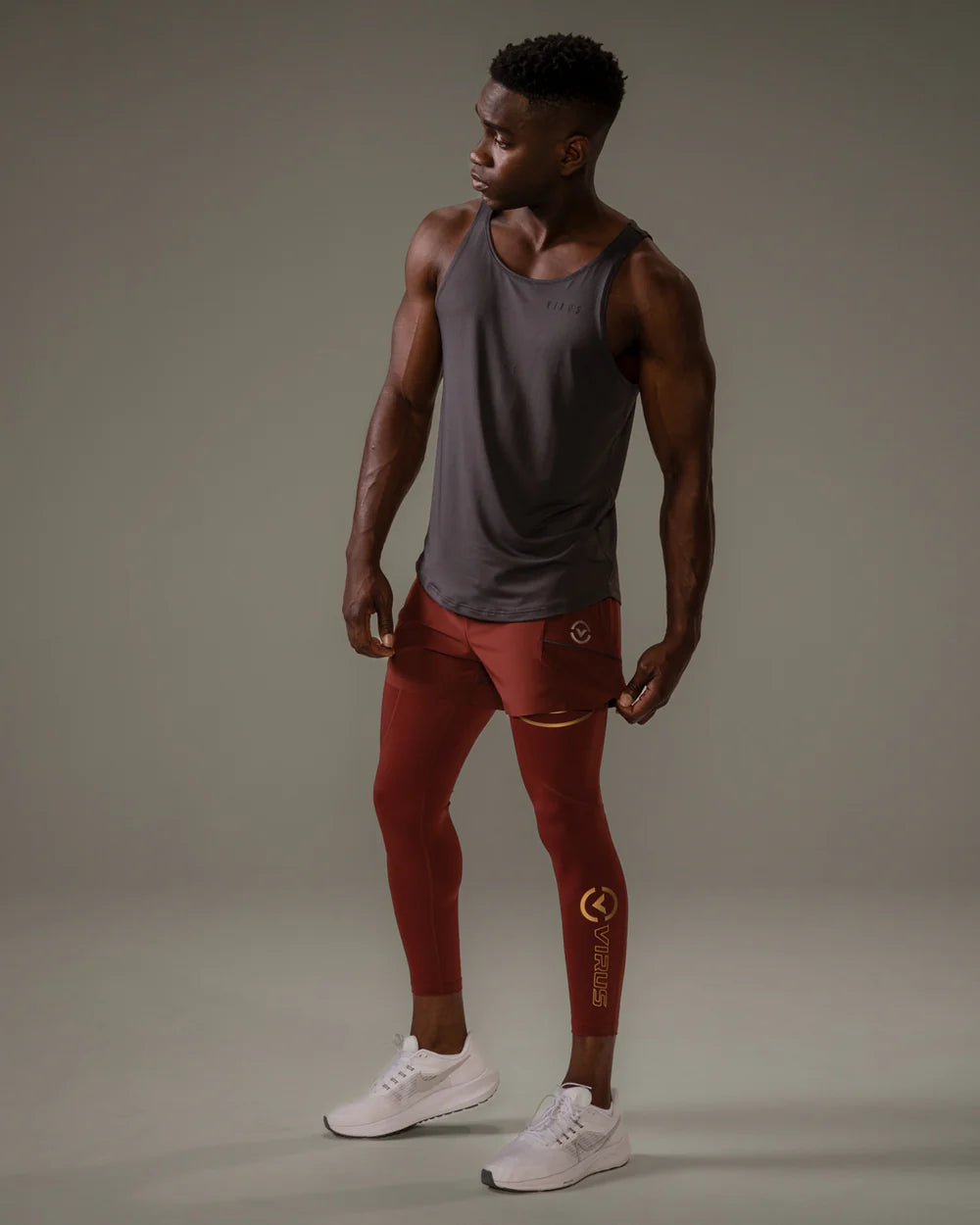
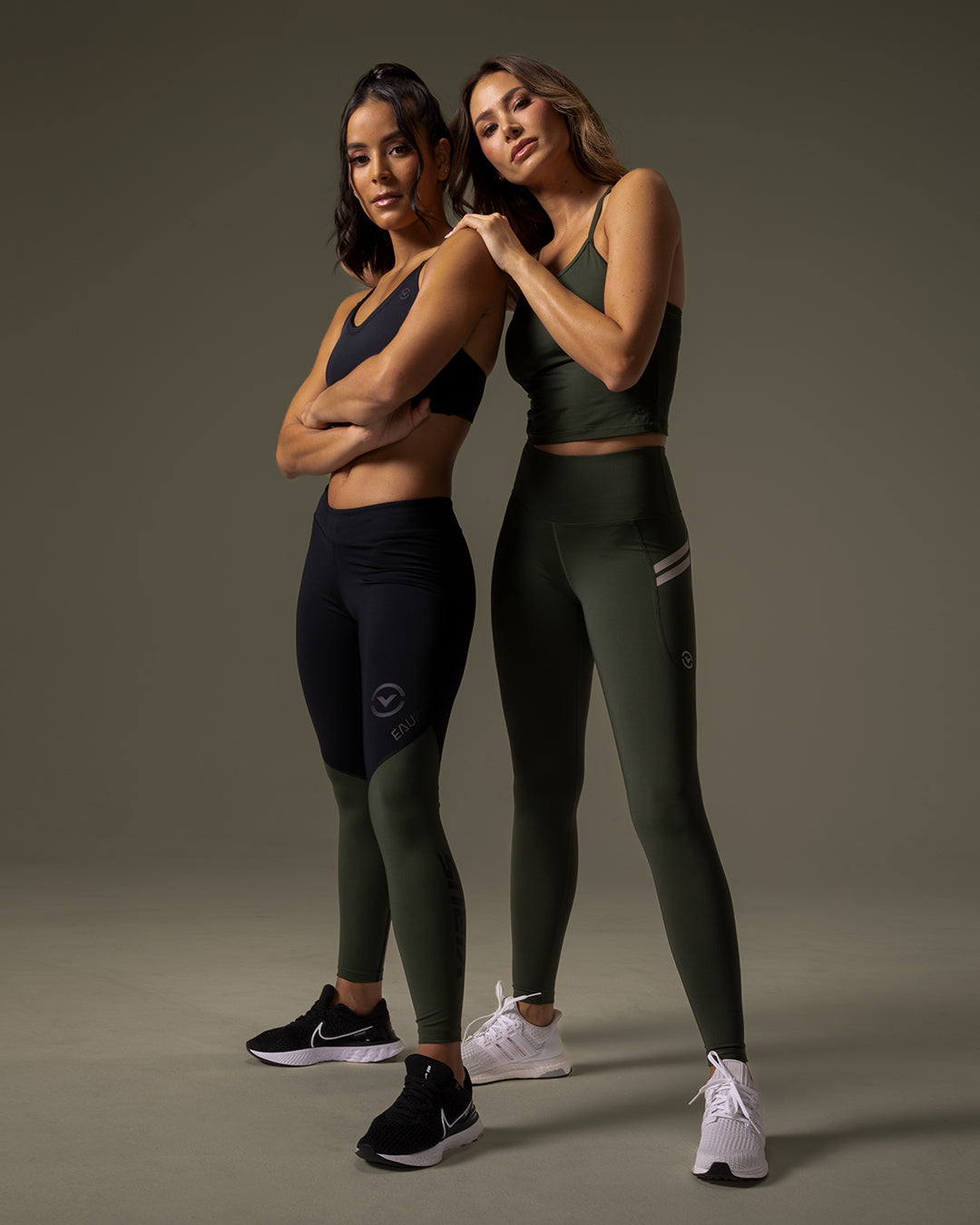

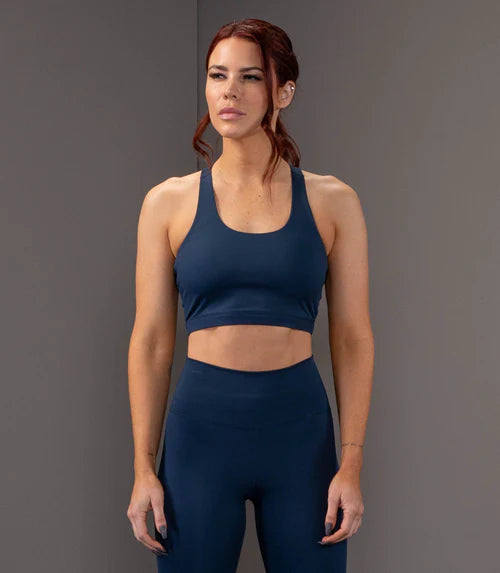


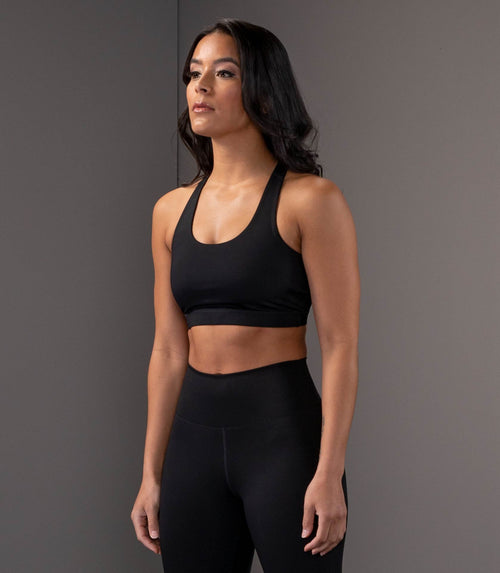
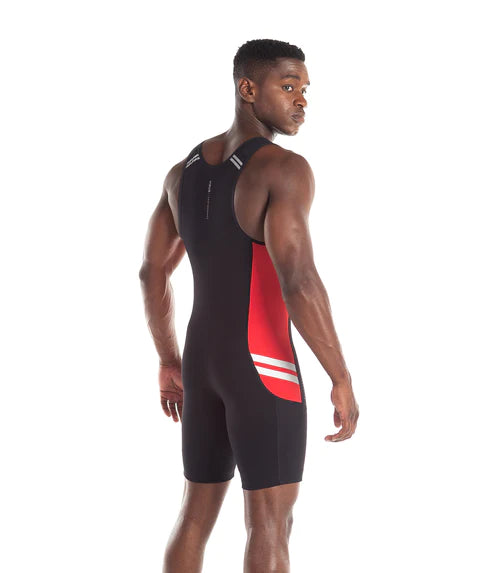
Leave a comment
This site is protected by hCaptcha and the hCaptcha Privacy Policy and Terms of Service apply.